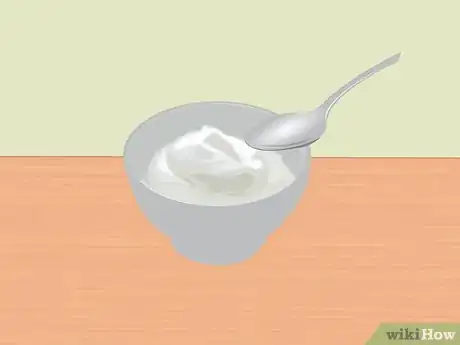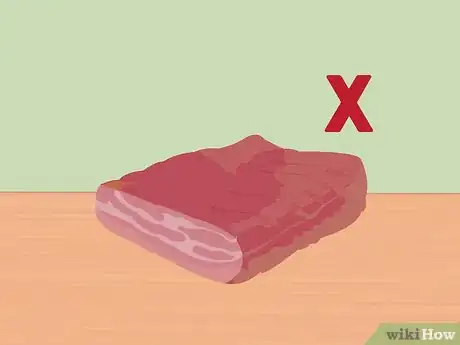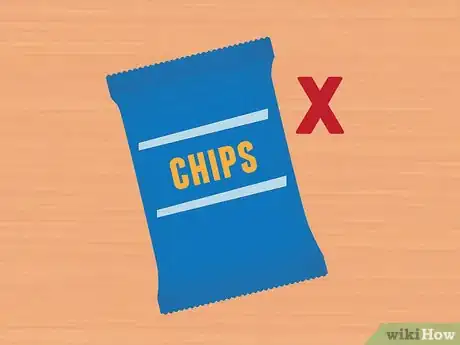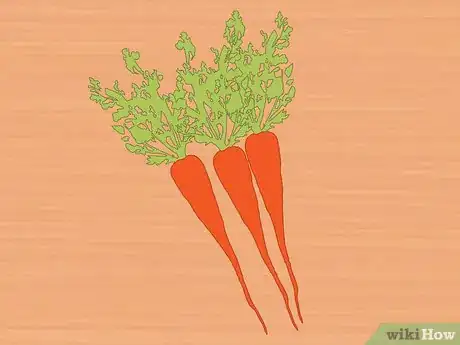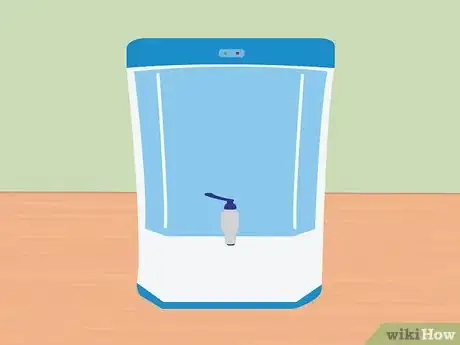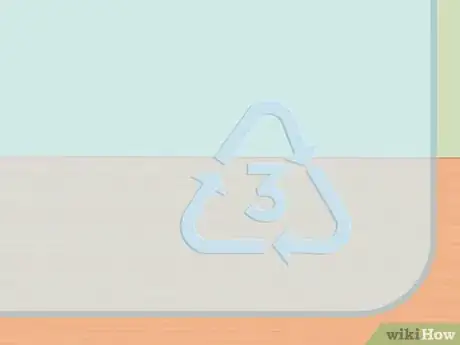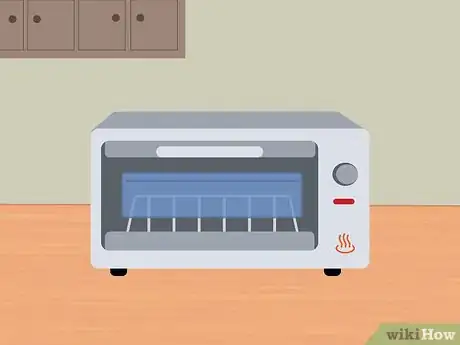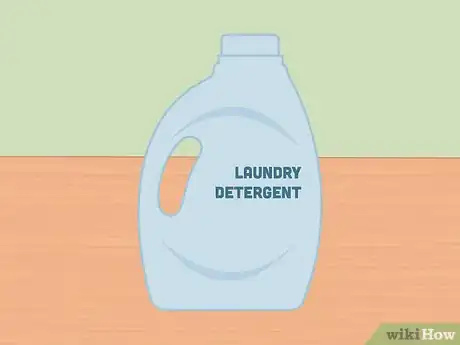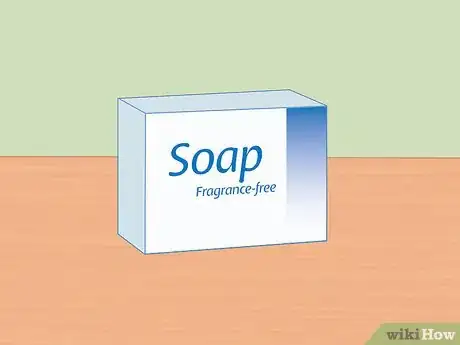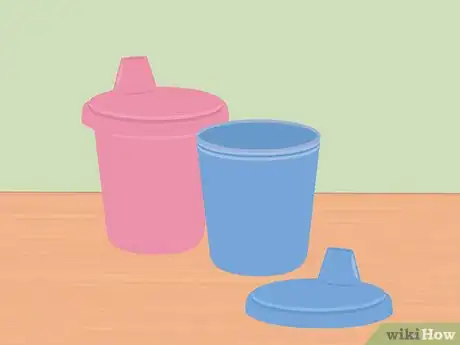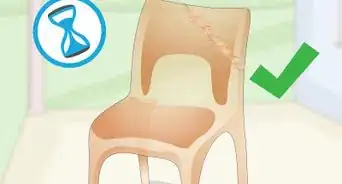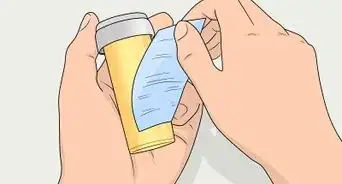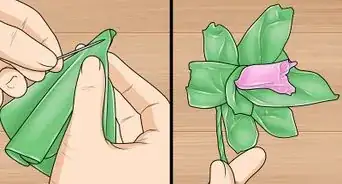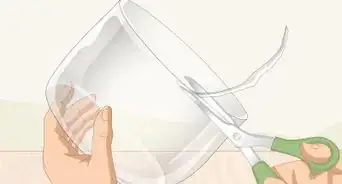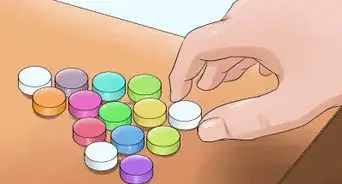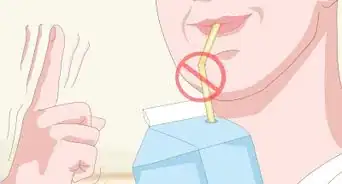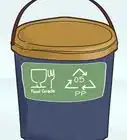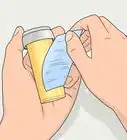This article was co-authored by Chris M. Matsko, MD. Dr. Chris M. Matsko is a retired physician based in Pittsburgh, Pennsylvania. With over 25 years of medical research experience, Dr. Matsko was awarded the Pittsburgh Cornell University Leadership Award for Excellence. He holds a BS in Nutritional Science from Cornell University and an MD from the Temple University School of Medicine in 2007. Dr. Matsko earned a Research Writing Certification from the American Medical Writers Association (AMWA) in 2016 and a Medical Writing & Editing Certification from the University of Chicago in 2017.
There are 13 references cited in this article, which can be found at the bottom of the page.
wikiHow marks an article as reader-approved once it receives enough positive feedback. In this case, 94% of readers who voted found the article helpful, earning it our reader-approved status.
This article has been viewed 51,477 times.
Phthalates are a type of chemical (in the same family as BPA) that are used to make plastic items and are also used in many different types of cosmetics and toiletry items.[1] Specifically, a phthalate is any chemical that includes a benzene ring bonded to two carboxylic acid groups via the carbon atom in each group. This chemical can be found in items ranging from plastic food storage containers, perfume, air fresheners, laundry detergent, as a component of pesticides, and even on plastic toys. Some studies have shown that phthalates can cause damage to the liver, kidneys and the reproductive systems of both males and females. The studies specifically show these side effects can affect an unborn baby.[2] Although there is a lot of ongoing research regarding phthalates, it's a good idea to be aware of where they are and how to reduce your exposure to them.
Steps
Avoiding Foods with High Concentrations of Phthalates
-
1Choose foods that are naturally low in phthalates. In all the studies that were done on foods, scientists were able to determine a specific list of foods that are low in phthalates. These are foods you should focus on in your diet to help you reduce your exposure to this chemical.[3]
- Dairy products like low-fat milk and yogurt have low levels of phthalates as do eggs. Avoid high fat foods such as creams, whole milk, and fatty meats as much as possible.
- Among the grain group, pasta, rice and noodles consistently ranked lower in phthalates.
- In conventional fruits and vegetables, phthalates levels were very low; however, this is not true for conventional canned fruits, vegetables and pickles. Avoid canned or processed foods.
- Bottled water and other canned/bottled beverages were found to have low levels of phthalates.
- Although these foods are found to have low levels of phthalates, they are not completely free of them.
-
2Avoid foods known to be very high in phthalates. In addition to focusing more on foods that are lower in phthalate levels, it's best to be aware of the foods that have high levels.[4] Stay away from these foods to reduce your overall exposure:
- Studies have shown that phthalates were detectable at high levels in beef, poultry and pork. Specifically in poultry, levels were high in the skin. A few studies showed the phthalate level was lower in frozen meat and poultry.[5]
- High levels of phthalates were detected in fats like butter, margarine, cooking oils and animal fats (like lard).
- Dairy items like heavy cream, ice cream and cheese had high to very high levels of phthalates.
Advertisement -
3Avoid packaged foods. Studies have also shown that phthalates are particularly high in some packaged foods. Try to avoid these foods, especially for children, as you may be surprised at the concentration levels of phthalates.[6]
- Studies have shown that children get exposed to the highest concentration of phthalates from common packaged goods.[7] Since these chemicals have serious effects on infants and children, its important to avoid these foods.
- Scientist believe that part of the reason packaged foods in particular are so high in phthalates is that these chemicals are already present in the food in addition to the packaging. The phthalates can be transferred from the packaging to the food itself.
- Try to avoid packaged and processed foods (like cereals, crackers, and even infant formula). Make your own versions of you and your child's favorite items from scratch at home.
-
4Choose 100% organic foods. Since studies have shown that phthalates are unfortunately found in many foods, the best way to avoid this chemical may be by purchasing and eating 100% organic items.[8]
- 100% organic foods are strictly monitored by the USDA. The farmers and manufactures have to follow a very specific set of guidelines to make sure foods are not exposed to a variety of different pesticides or chemicals — including phthalates.[9]
- Since many synthetic pesticides that are sprayed onto fruits and vegetables contain phthalates, make sure to look for produce that's labeled 100% organic.
- Also consider purchasing 100% organic dairy and meat products. Phthalates seem to be attracted to fat and are found in high quantities in dairy products and meat products; however, DEHP, a toxic phthalate, has been found in certified organic dairy products.[10] This may be because, even on small farms, milk is collected from cow's udders using plastic tubing.[11]
Avoiding Phthalates in Containers and Food Prep
-
1Use a water filter. Not surprisingly, phthalates are also found in water. Since we cook with water and regularly drink it, it's important to find a method of removing or reducing the amount of phthalates in water.
- Studies have shown that phthalates can be removed from drinking water by filtration with a water filter or filtering system.[12]
- A basic water filtration device — like a water pitcher or a twist-on for your faucet — should be able to remove most phthalates from your drinking water.
- However, some claim that they cannot remove all phthalates. A nano filtration system, which is more expensive, can remove all phthalates from your drinking water.
-
2Buy a stainless steel water bottle. Since phthalates are in high concentrations in plastic bottles, it's important to avoid using plastic bottles when transporting water or other liquids.[13]
- Consider looking for BPA-free and phthalate-free reusable water bottles. Many of these water bottles are now made in stainless steel which is a great alternative.
- Also, make sure you do not heat up plastic water bottles or put hot liquid into plastic bottles.
- Other options include containers made of ceramic, glass, or wood to hold and store food and water instead of plastic.
- If you need to buy bottled water, look for one that distinctly says phthalate-free on the label or use your own filtered water.
-
3Store food in plastic containers that have the 2, 4, or 5 recycling codes on them. There is a neat little trick to make sure the plastic item you're using is indeed, phthalate-free. Make sure to review the whole package to look for these special codes.[14]
- There is a little triangle label on all plastic items. Many times, this is found on the bottom or side of the item. For example, it's typically listed on the bottom of plastic water bottles.
- If you see numbers like 3, 6, or 7 listed, this product contains phthalates. Do not purchase this, use this or drink from it.
- If the numbers listed are 2, 4, or 5, then you can be certain this plastic container or bottle does not contain any BPA or phthalates.
- You may also want to consider using glass or porcelain food storage containers instead. This takes the guesswork out of finding a phthalate-free container.
-
4Avoid heating or cooking food in plastic. Phthalates and even BPA that are found in plastic containers or bottles can leach into foods or beverages at higher concentrations when they're heated. Avoid heating up these types of plastics.[15]
- Take foods out of plastic containers they come in from the store when you get home. Repackage them into phthalate-free containers or cook them immediately.
- Purchase food storage containers that do not contain phthalates or use porcelain containers to store foods.
- Do not heat up foods in plastic tupperware or other plastic containers — don't place plastic in the microwave or oven. Take the foods out and put them on a plate to heat up.
- Also avoid using plastic wrap to cover and store foods. Use aluminum foil or put foods in a phthalate-free storage container.
Avoiding Phthalates in Cosmetics and Household Items
-
1Read the labels on all items. Whether you're buying make-up or laundry detergent, it's important to read the labels on these items. You may be able to figure out whether or not they contain phthalates.
- Although companies are not required to list phthalates, many companies do promote when they do not use phthalates. Look for wording that says "phthalate-free" on your products.
- Also look for wording like "synthetic fragrance" as these are sure to contain phthalates.[16]
-
2Check out EWG's Skin Deep Database. Phthalates are very widespread and found in many foods, plastic products, cosmetics and other household items. This can make it difficult to figure out how to avoid them. However, the EWG's Skin Deep Database is a useful resource to help you figure out where these harmful chemicals may be hiding.[17]
- This website reviews a variety of chemicals including phthalates and lists what they are, what they're used for, products that contain them and possible side effects from exposure to them.[18]
- Take a look at this website to see what products you use or currently own that are listed as containing phthalates.
- Also review the list of items that are phthalate free. You can use this to replace products you've previously purchased that did contain this harmful chemical.
-
3Only purchase items with natural fragrances. An easy way to avoid phthalates when it comes to scented items, is to choose natural or fragrance-free items. This will help limit your exposure to phthalates.[19]
- Look for wording like: "made with only essential oils" or "non-synthetic fragrance." These will not contain phthalates.
- Also consider purchasing items that are fragrance-free. Soap bars, hand soap, body wash and lotions can be purchased without any fragrance.
-
4Be careful with baby bottles. One of the most important places to avoid phthalates (and BPA as well) are baby bottles, pacifiers, teethers and other plastic items. You do not want your child being exposed to high levels of these harmful chemicals.[20]
- Although a law passed in 2009 has banned some types of phthalates from baby products, if you have older toys or products or are getting hand-me-downs, they could still contain some of these chemicals.
- Glass bottles are recommended for infants and babies that cannot feed themselves yet.
- Also, consider using silicone bottle nipples. The plastic and latex nipples do contain phthalates and shouldn't be used to feed your child.
- Read the labels on all other plastic products your child may come into contact with. Look for phthalate and BPA-free.
References
- ↑ http://health.westchestergov.com/bisphenol-a-and-phthalates
- ↑ http://health.westchestergov.com/bisphenol-a-and-phthalates
- ↑ http://ehjournal.biomedcentral.com/articles/10.1186/1476-069X-13-43
- ↑ http://ehjournal.biomedcentral.com/articles/10.1186/1476-069X-13-43
- ↑ http://ehjournal.biomedcentral.com/articles/10.1186/1476-069X-13-43
- ↑ http://www.ehhi.org/reports/plastics/phthalates_exposures.shtml
- ↑ http://www.ehhi.org/reports/plastics/phthalates_exposures.shtml
- ↑ http://ehjournal.biomedcentral.com/articles/10.1186/1476-069X-13-43
- ↑ http://www.livescience.com/52863-natural-organic-definition.html
- ↑ http://www.nature.com/jes/journal/v23/n4/abs/jes20139a.html
- ↑ http://www.motherjones.com/tom-philpott/2013/03/study-eating-fresh-local-and-organic-wont-protect-you-nasty-chemicals
- ↑ http://www.sciencedirect.com/science/article/pii/S0011916404000359
- ↑ http://health.westchestergov.com/bisphenol-a-and-phthalates
- ↑ http://health.westchestergov.com/bisphenol-a-and-phthalates
- ↑ http://www.mensjournal.com/health-fitness/health/how-to-avoid-phthalates-in-plastics-and-cosmetics-20140130
- ↑ http://health.westchestergov.com/bisphenol-a-and-phthalates
- ↑ http://www.mensjournal.com/health-fitness/health/how-to-avoid-phthalates-in-plastics-and-cosmetics-20140130
- ↑ http://www.ewg.org/skindeep/ingredient/701929/DIBUTYL_PHTHALATE/
- ↑ http://www.ewg.org/skindeep/ingredient/701929/DIBUTYL_PHTHALATE/
- ↑ http://health.westchestergov.com/bisphenol-a-and-phthalates
